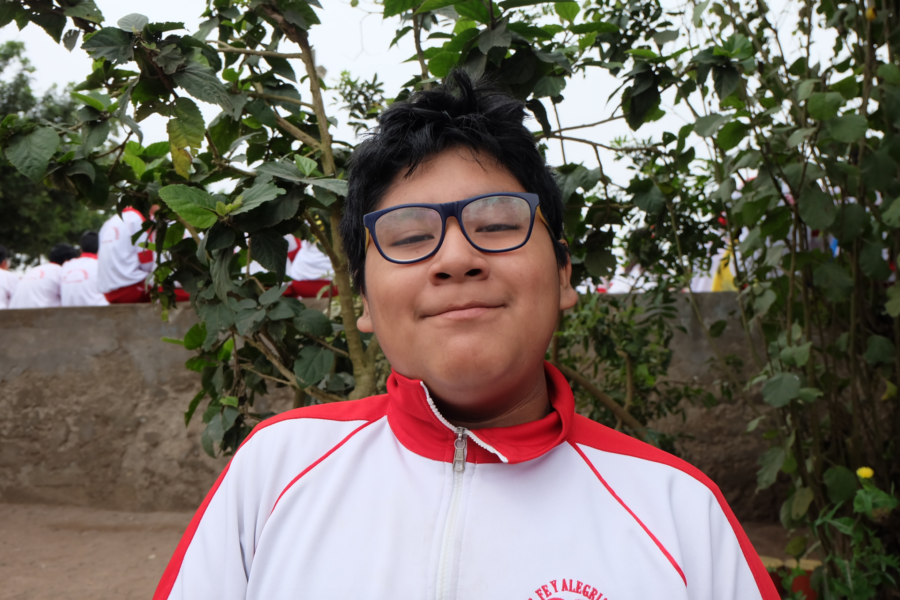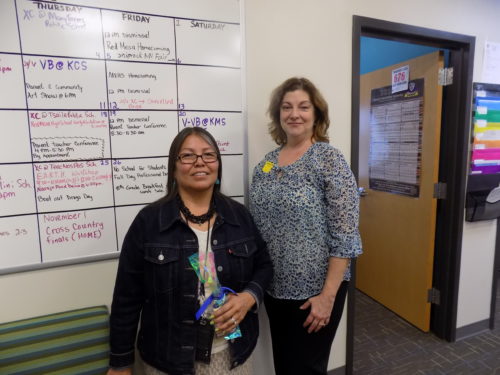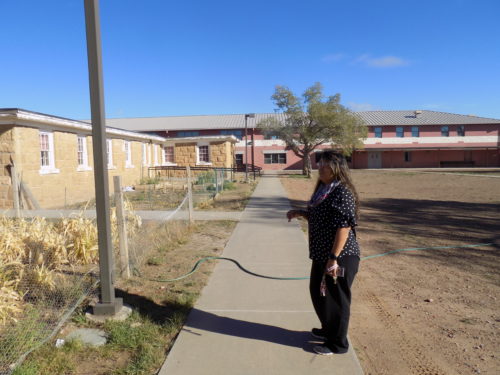*Note: This blog was written prior to the COVID-19 pandemic. Although much has changed regarding our sponsored children’s learning experience in the past months, our On the Road stories remain relevant in regards to our volunteer coordinator’s work and the impact of sponsorship on children in our program thanks to our sponsors. We are pleased to continue to share stories with you about our work.
***
Greyhills Academy High School, located in Tuba City, Arizona, has been affiliated with Children Incorporated since 2006.
This unique school focuses on nurturing students who have the potential for higher levels of academic success but might struggle in other areas such as behavior or attendance — often due to the circumstances involving the impoverished households from which they come.
Helping students on a path towards success
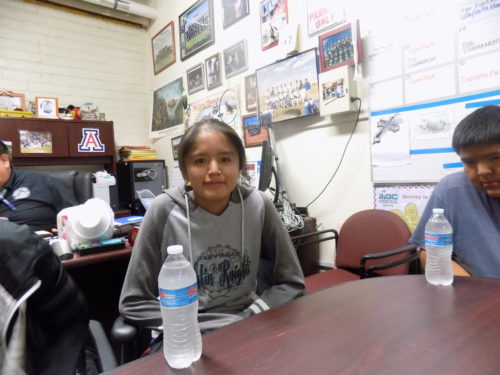
Renée met with some of our sponsored children during her visit.
To encourage students to want to do well in school, Greyhills offers programs and activities in Navajo culture and language that foster pride in their heritage. Additionally, the school also provides a highly structured program called the Freshman Academy, where efforts are made to ease the transition from middle to high school for incoming ninth graders.
According to the Greyhills Academy website, “To help incoming freshmen ease into the rigors and expectation of our school, we have the Freshman Academy. This is a transitional program to give our incoming freshmen the support they need to be successful.”
Part of helping students transition into high school is also offering a residential program for those children who are coming from faraway areas. These students live in the Academy’s dormitories during the week and then go home on weekends and school breaks. During their stay, they enjoy athletics, clubs, and family engagement activities that help them get acclimated to their new environment, make friends and learn new skills and hobbies.
This unique school focuses on nurturing students who have the potential for higher levels of academic success but might struggle in other areas such as behavior or attendance.
It takes a village
While visiting Greyhills Academy last year, our Director of U.S. Programs, Renée Kube, met with our volunteer coordinator at the school, Roger, as well as some other staff members who are vital to the success of our sponsorship program at the school.
“Roger had set up a committee specifically to manage the Children Incorporated program at the school,” explained Renée.
“With this system, he and three other administrators take turns going on shopping trips for our sponsored children. Many of the families meet them at local stores, or they will shop personally for those who cannot make the trip.”
“Thanks to the committee members’ support, Roger can handle the workload involved with providing for sponsored children regularly as well as ensuring that the children are given opportunities to communicate with their sponsors through letters,” said Renée.
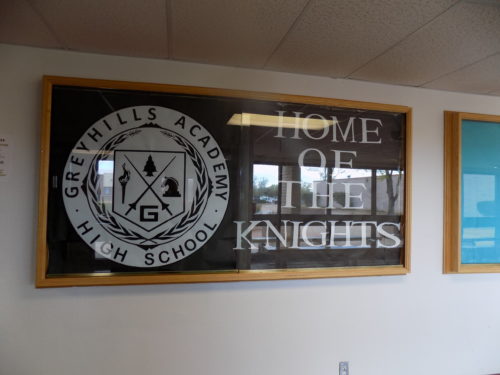
Greyhills Academy is home of the Knights.
After meeting with Roger and the other committee members, Renée had the chance to meet a few of the students in our program.
Meeting Maria and Bradley
Maria* is in 11th grade and was enrolled in the Children Incorporated Program in the 3rd grade when she attended our other affiliated project, Tuba City Boarding School. She loved volleyball then, and she still loves it now. She lives with her mother, grandmother, and three younger siblings and wants to be a nurse when she gets older. Maria’s sponsor lives in Switzerland and has been part of our organization since 1975. Maria told Renée how appreciative she was for having her sponsor for so many years, especially as she transitioned from school to school while growing up.
Bradley enrolled in our program in 2016 when he was a new 9th grader. He is now a bright and funny 12th grader who jokes that he is always tired from the many activities and sports he participates in. His favorite sport is baseball. Bradley has taken welding courses in school, and he is also interested in auto mechanics. He is also thinking about becoming a carpenter or construction technician when he graduates. In his downtime, he enjoys drawing and listening to music. Bradley is the middle of three children who live with their single father. His father hauls and sells wood for a living, and he earns a meager income. Having a sponsor has helped Bradley to focus on his passions and interests instead of worrying about having clothes, shoes, and school supplies over the years.
*Names changed to protect the children.
***
How do I sponsor a child in Arizona?
You can sponsor a child in Arizona in one of two ways: call our office at 1-800-538-5381 and speak with one of our staff members or email us at sponsorship@children-inc.org.


